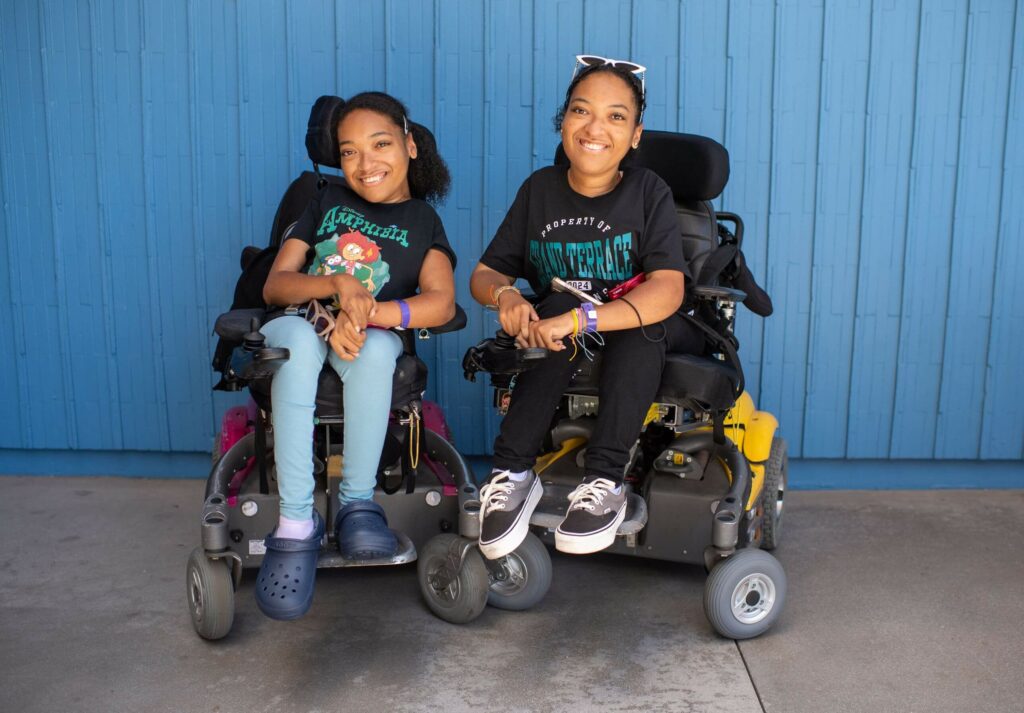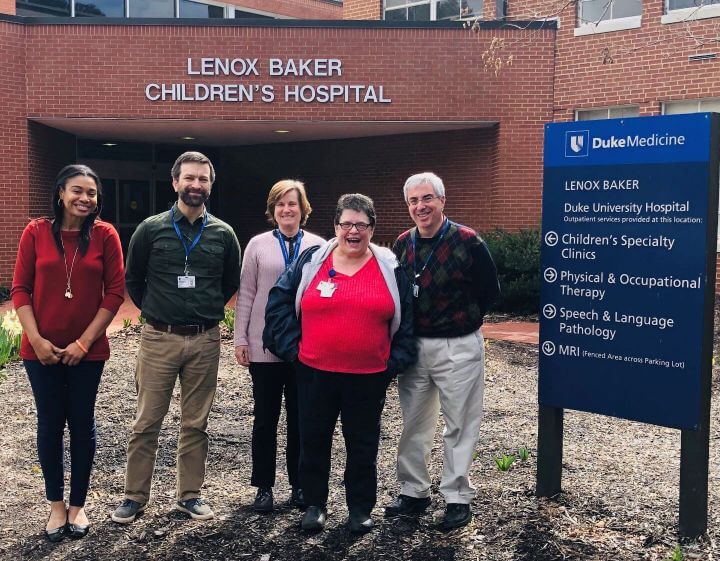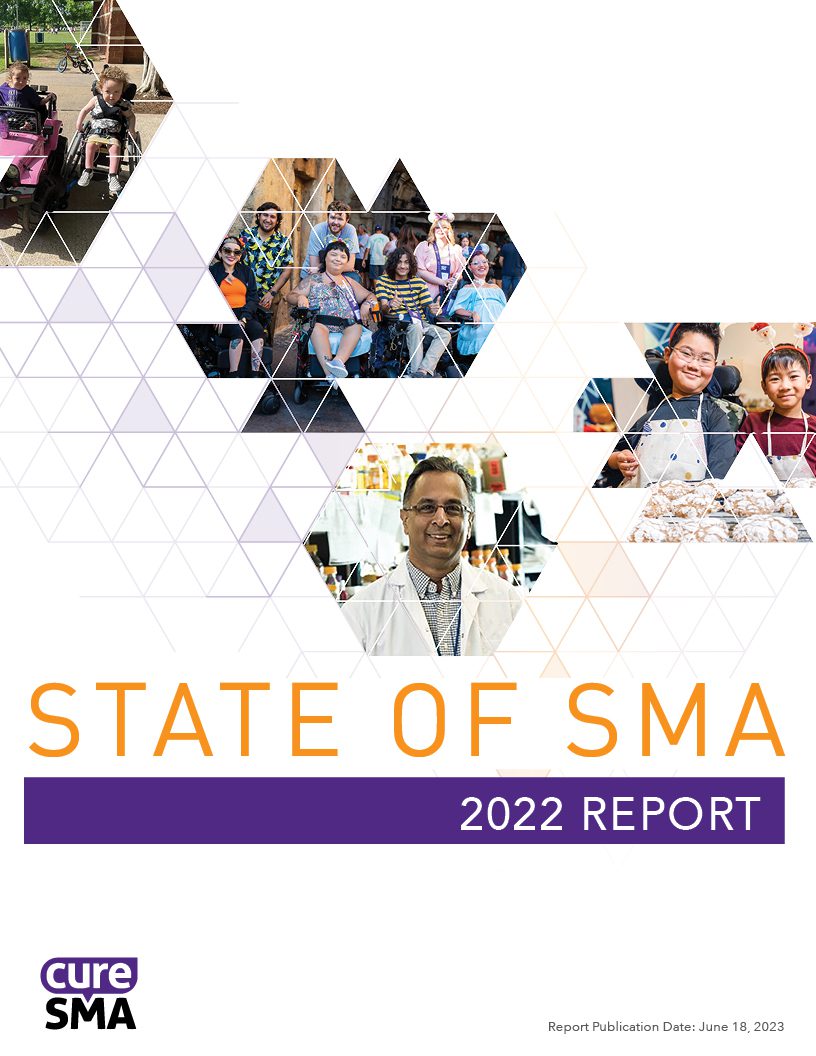About SMA
Spinal muscular atrophy (SMA) is a progressive neurodegenerative disease that affects the motor nerve cells in the spinal cord and impacts the muscles used for activities such as breathing, eating, crawling, and walking.
Quick Links

About Spinal Muscular Atrophy
SMA is caused by a mutation in the survival motor neuron gene 1 (SMN1). In a healthy person, this gene produces a protein that is critical to the function of the nerves that control our muscles. Individuals with SMA produce low levels of survival motor neuron (SMN) protein. Without this protein, those nerve cells cannot properly function and eventually die, leading to debilitating and sometimes fatal muscle weakness.
SMA affects approximately one in 11,000 births in the U.S., and about one in every 50 Americans is a genetic carrier. SMA can affect any race or gender.
Historically SMA was classified by five primary types of SMA — 0, 1, 2, 3, and 4 — based on the age that symptoms begin and highest physical milestone achieved. However, disease modifying treatments and newborn screening are changing the way we classify and describe SMA.
Individuals with SMA may have difficulty performing some of the basic functions of life. However, SMA does not affect a person’s ability to think, learn, and build relationships with others.

Does your child show signs of a motor delay?
Developmental delays can be early signs of a serious medical condition. Always trust your instincts. If something about your child’s development doesn’t feel quite right, don’t delay. Cure SMA created the SMArt Moves campaign to educate parents and healthcare providers about the signs of delayed milestones. With SMA, early diagnosis and early treatment is key.
Understanding SMA

Genetics of SMA
SMA is caused by a mutation in the survival motor neuron gene 1 (SMN1) leading to debilitating muscle weakness.
Testing/Diagnosis
An SMA diagnosis must be confirmed through genetic testing, usually after noticing SMA symptoms.
Screening
Evidence shows that early diagnosis, like through newborn screening, and treatment leads to better outcomes.
SMA Care for Providers
Respiratory Care and SMA
Identify strategies and/or methods to maintain respiratory health in patients with SMA.
Rehabilitative Care and SMA
Learn strategies and/or methods to maintain motor function and mobility in patients with SMA.
Nutrition and SMA
Recognize the therapeutic importance of maintaining optimal nutrition in patients with SMA.
Shared Stories of SMA Families: The Good, Bad, and In-between
Hear patients and families talk about the impact SMA has on quality of life, challenges, and best practices.
2022 State of SMA Report
The State of SMA report shares highlights from Cure SMA’s data sources: Cure SMA proudly hosts three databases: a patient-reported database with data from over 9,700 affected individuals worldwide that also incorporates longitudinal data from our annual community update survey; the SMA clinical data registry (CDR) that contains electronic medical record (EMR) sourced data from 20 U.S.-based SMA Care Center Network sites; and a newborn screening registry with data from parents of babies with SMA identified through statewide SMA newborn screening.
The 2022 State of SMA Report presents a snapshot of the quickly changing landscape of SMA. More specifically, the report includes age and gender breakdown of the SMA community; socioeconomic characteristics of adults affected with SMA; prevalence of SMA type and SMN2 copy number, use of FDA approved treatments, impact of newborn screening, and decreasing mortality rates.




